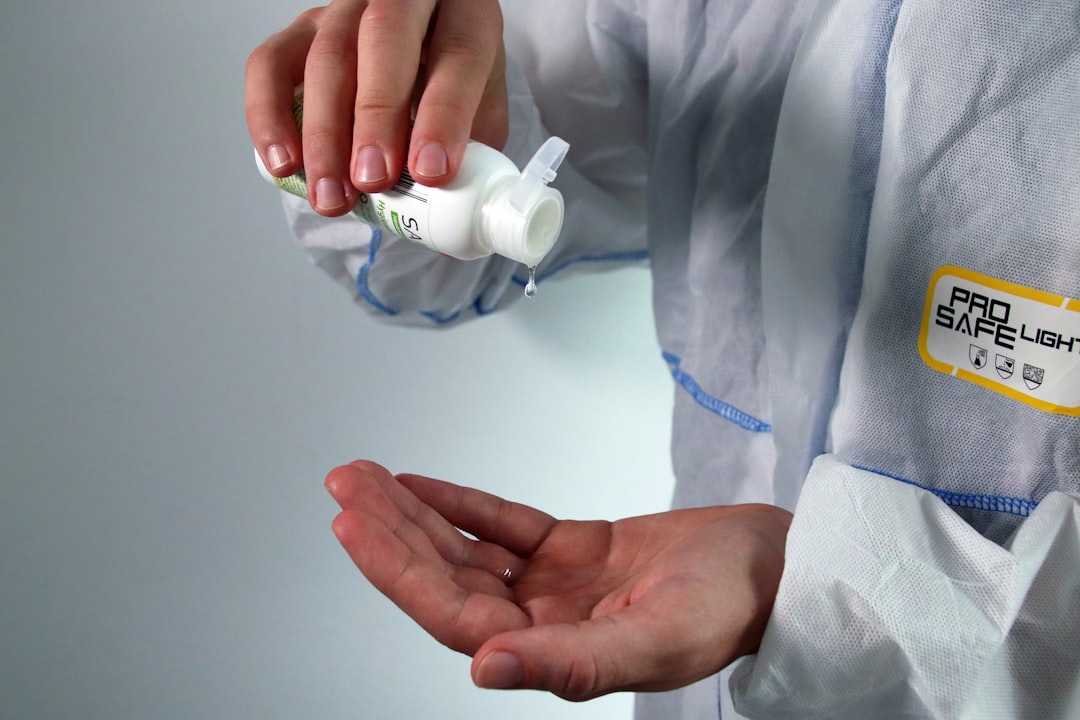

Engage prospects with a scan and streamline customer engagement with FREE QR code marketing tools by Sona – no strings attached!
Create a Free QR CodeFree consultation

No commitment

Engage prospects with a scan and streamline customer engagement with FREE QR code marketing tools by Sona – no strings attached!
Create a Free QR CodeFree consultation

No commitment
Medication management services play a pivotal role in improving patient outcomes, reducing medication errors, and streamlining healthcare processes across a range of environments, including hospitals, pharmacies, and senior living facilities. Healthcare providers often struggle to capture meaningful feedback and engagement signals from patients, particularly when interactions occur offline or within fragmented systems. Missed patient signals can result in incomplete understanding of adherence barriers, lost opportunities to address concerns, and overlooked high-value patient segments.
In today's complex healthcare settings, traditional feedback methods such as paper surveys or manual tracking are no longer enough. QR codes are redefining how physical touchpoints like prescription packaging seamlessly bridge the offline-to-online gap. These codes enable frictionless pathways for patients to provide feedback, log adherence, or access digital resources while care teams gain engagement data that was previously lost or untracked.
By integrating QR code technology into medication management services, healthcare leaders can address chronic pain points like missed signals, low survey response rates, and error-prone manual processes. This strengthens patient relationships, introduces higher operational efficiency, and unlocks new avenues for process optimization. The following guide details how to implement QR codes as a tool for real-time, actionable feedback to support automated engagement throughout the patient journey.

Many healthcare organizations still depend on outdated analog feedback methods, leaving valuable patient insights uncaptured and slowing their ability to respond to emerging needs. Paper surveys in pharmacy bags get discarded, manual logs in senior living facilities go incomplete, and follow-up calls miss patients altogether. In scenarios where interactions occur outside the clinic, such as at home with a medication tray or during a community screening, opportunities for timely feedback are often missed and data is never recorded at all.
QR-driven digital workflows replace these brittle processes with instant, context-aware feedback. A single scan can open a short survey in the patient’s preferred language, preload visit or prescription context, and route the response to the right team in real time. Instead of waiting weeks for aggregate results, care managers and pharmacists can see trends within hours and intervene sooner for patients reporting side effects, confusion, or access barriers like cost and transportation.
Modern feedback systems allow organizations to surface nuances that would otherwise remain invisible. With QR codes, you close gaps in understanding and ensure that high-value patient feedback is never lost, which shortens the loop between patient need and provider action.

Medication management is uniquely challenged by patient disengagement and data fragmentation. Between price changes, side effects, polypharmacy, and caregiver dynamics, patients often need help at moments when they are nowhere near the pharmacy counter or clinic. Traditional analog touchpoints produce low participation and little actionable feedback because paper forms are easy to ignore and tough to return. Without timely insight, teams cannot identify adherence risks early or triage emerging issues to appropriate care pathways.
QR codes meet patients where they are and turn routine materials into digital interactions. From pill bottle caps to appointment reminder magnets, a scan can open a guided pathway that is short, mobile-friendly, and personalized. For organizations, the same scan generates analytics that reveal patient behavior patterns across locations, times, and medications.
With integrated QR codes, organizations turn previously invisible touchpoints into measurable, actionable moments that improve both compliance and service quality. The result is a more responsive, data-driven approach to medication support.

Medication management workflows vary from acute care to community pharmacies to senior living communities, so using the right QR format is essential. A generic redirect to a homepage often produces poor data and low conversion. Dynamic, context-aware QR codes provide structured pathways that match each patient moment.
Dynamic formats enable intelligence behind each scan. For example, a QR code on a high-risk medication leaflet can prefill the drug class and ask targeted side-effect questions, while a QR code on a refill postcard can take patients directly to a secure refill request form. These contextual experiences make responses more relevant and actionable.
Embracing dynamic, context-specific QR code types improves response relevance and helps you avoid incomplete data capture. It also lays the groundwork for segmentation and automation, which are vital for continuous improvement.
Growth in medication management depends on catching signals that highlight where patients struggle. Traditional feedback collection at the counter misses the reality that most medication use happens at home. Without visibility into those moments, it is difficult to improve instructions, refills, or side-effect triage processes.
Strategic QR code placement reveals hidden opportunities. By embedding codes where patients live with their medications, you encourage timely feedback and engagement. You also gain pattern data to refine staffing, education, and communication channels.
Matching QR placement to key decision moments ensures that high-value interactions are logged and actionable. This reduces lost or underutilized engagement data while providing a clearer map of where to invest in education, staffing, and technology.

Medication journeys include recurring milestones that are ideal for feedback and engagement. When these opportunities rely on manual or delayed methods, signals vanish. QR codes provide a direct path to capture the right data at the right time, which supports earlier interventions and better outcomes.
Well-chosen use cases are simple for patients and operationally manageable for teams. Start with two or three core pathways, then expand as you learn which interactions consistently produce actionable insights.
When QR deployments reflect real patient experiences, care teams obtain the feedback needed to prevent risk and tailor support. Over time, these signals illuminate which interventions deliver the greatest impact at the lowest cost.
Each QR scan is a behavioral signal that reveals intent, context, and urgency. By distributing multiple codes across touchpoints, medication management teams can automatically segment patients and caregivers into audiences for personalized follow-up. This transforms generic communications into targeted outreach that resonates with the individual’s stage of therapy.
Audience building should focus on high-value distinctions. For instance, a scan from an initial prescription insert suggests new-to-therapy education needs, while a scan from a refill reminder points to ongoing adherence support. Caregivers scanning in senior living environments indicate a different support model than independent patients scanning at home.
With systematic scan-driven segmentation, providers replace assumptions with real behavior. The result is more relevant retargeting, improved patient experience, and more efficient use of clinical staff time.
Disconnected campaigns create fragmented experiences that confuse patients and overburden staff. When QR codes are woven through your print, digital, and in-person channels, they become the connective tissue of a coherent engagement strategy. Every scan moves the patient forward while producing data that strengthens the next touchpoint.
A multichannel approach also makes it easy to repurpose insights. If a QR code on a discharge folder reveals frequent questions about injection technique, your social and email content can emphasize that topic. In parallel, an EHR alert can prompt clinicians to emphasize the same instruction during follow-up calls.
A coordinated omnichannel approach powered by QR-enabled data keeps each touchpoint consistent, relevant, and actionable. It also standardizes analytics across channels so you can invest in the placements that truly move the needle.
Medication management teams can struggle with process drift and incomplete adoption when launching feedback initiatives. Clear workflows and well-structured data capture reduce confusion and keep campaigns aligned with clinical and operational goals. A simple, repeatable checklist helps teams move from pilot to scale without losing fidelity.
The following execution plan prioritizes measurable outcomes, patient safety, and accessibility. It maps directly to the most common medication management goals: improving adherence, triaging side effects, and elevating patient satisfaction for quality reporting.
A structured, analytics-driven process ensures actionable feedback is captured and supports ongoing iteration and scaling. Build a cadence for reviewing insights with cross-functional stakeholders, and celebrate wins to maintain momentum as you expand deployment.
A scan is only the beginning. Without robust tracking, organizations cannot connect engagement to clinical outcomes or financial impact. Medication management teams need visibility that links a patient’s scan to the actions that follow, such as scheduling a consult, completing a course of therapy, or refilling on time.
QR-enabled analytics provide both a wide-angle view and the granular detail needed for improvement. They reveal which placements drive conversions, where drop-offs occur, and how scan behavior predicts adherence risk. This makes it possible to direct clinical resources where they can have the greatest effect and to demonstrate ROI for executive sponsors.
When QR analytics are tied to both clinical metrics and business outcomes, leaders gain the evidence needed to scale what works and sunset what does not. This moves QR from a novelty to a core component of performance management.
Even strong QR deployments can underperform if codes are generic, staff are unprepared, or follow-ups are manual. A few best practices make a significant difference in scan rates, data quality, and the speed at which your team can act on insights.
Select tactics that match your environment, audience, and most common materials. In retail pharmacy settings, bags and counter displays typically outperform posters. In senior living, calendar placements and medication trays are reliable. In hospital-to-home transitions, discharge folders and magnet cards are effective reminders.
These practices ensure your QR program compounds in value over time. As scan data grows, segmentation improves, content becomes more relevant, and clinical interventions become more timely.

Analog methods like paper surveys and suggestion boxes capture only the most motivated voices. QR codes broaden participation by reducing friction and meeting patients where they are. Organizations that adopt creative placements and simple, benefit-driven calls to action often see dramatic improvements.
When teams design QR experiences around patient context rather than organizational convenience, response quality rises. Short, mobile-optimized forms with clear purpose statements get completed more often. Add caregiver options and language support to expand inclusivity.
These examples show how QR codes turn isolated interactions into data-rich insights that improve care delivery and operational performance. They also demonstrate that even small placement changes can unlock substantial value.
Traditional methods leave providers blind to critical medication moments like missed doses or unreported side effects. QR codes remove these blind spots by enabling timely, patient-friendly pathways to share feedback, request help, and access education. The result is proactive, personalized care rather than reactive damage control.
A successful program does more than add a code to a label. It connects that code to a thoughtful workflow with clear outcomes, accessible design, and integrated analytics. Start small, measure rigorously, and scale placements that consistently produce actionable data.
QR codes are more than a shortcut; they are a modern engagement strategy. For medication management services, they turn every physical touchpoint into a digital opportunity, ensuring valuable patient feedback and engagement signals are always captured.
This shift brings lasting benefits. Organizations can instantly capture engagement across labels, packaging, and clinic materials, bridging the gap between patient intent and provider action. They can deliver a connected patient experience from first awareness to continued adherence and support, rather than leaving patients to fend for themselves after pickup. Each scan becomes a data point for identifying growth opportunities and improving both outcomes and operational efficiency.
By effectively integrating QR codes into your workflows, your team can address missed signals, optimize the patient journey, and convert engagement data into real impact. Platforms such as Sona QR make it straightforward to create dynamic codes, manage destinations, monitor performance, and sync activity with CRM and analytics tools. As you expand deployment, the combination of structured feedback, automated follow-ups, and unified attribution will accelerate your path to measurable clinical and business results. Start creating QR codes for free.
QR codes have revolutionized medication management services by transforming patient feedback collection into a seamless, real-time process. They empower healthcare providers to enhance adherence monitoring, improve communication, and gather actionable insights that drive better patient outcomes and operational efficiency. Imagine instantly capturing patient experiences and medication adherence data with a simple scan—enabling timely interventions that save lives and reduce costs.
With Sona QR, creating dynamic, trackable QR codes is effortless. Update feedback campaigns on the fly without reprinting materials, connect each scan to meaningful data, and gain a clear picture of patient engagement and service effectiveness. No more guesswork—just precise insights that help you optimize medication management and elevate patient care.
Start for free with Sona QR today and transform every scan into a powerful tool for improving medication adherence and patient satisfaction.
Medication management services improve patient outcomes by reducing medication errors, capturing real-time patient feedback, enhancing adherence monitoring, and enabling timely interventions through integrated digital tools like QR codes.
QR codes offer frictionless patient feedback, bridge offline-to-online gaps, increase survey response rates, enable dynamic content updates, improve data tracking, and support personalized patient engagement across various touchpoints.
By using QR codes for side-effect reporting, adherence check-ins, and educational resources, medication management services enable early detection of issues, real-time triage, and improved patient understanding, which collectively reduce medication errors.
Medication management services include patient feedback collection, adherence logging, side-effect triage, refill optimization, educational micro-courses, and personalized communication facilitated by tools such as QR codes integrated with healthcare systems.
Medication management services integrate with electronic health records by syncing QR code scan data and patient feedback to CRM, EHR, and engagement platforms, enabling automated workflows, tailored follow-ups, and unified patient records for better care coordination.
Use Sona QR's trackable codes to improve customer acquisition and engagement today.
Create Your FREE Trackable QR Code in SecondsJoin results-focused teams combining Sona Platform automation with advanced Google Ads strategies to scale lead generation

Connect your existing CRM

Free Account Enrichment

No setup fees
No commitment required

Free consultation

Get a custom Google Ads roadmap for your business






Launch campaigns that generate qualified leads in 30 days or less.
